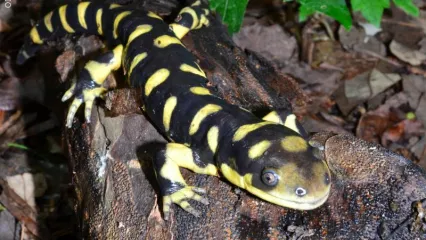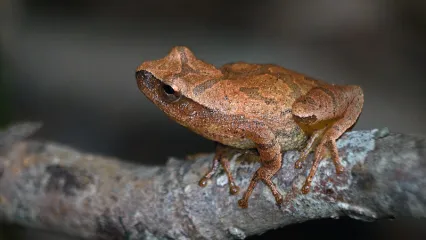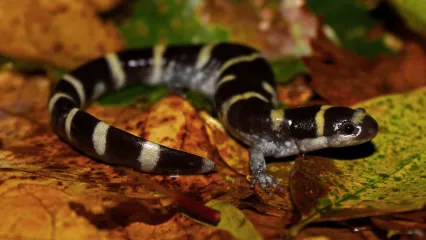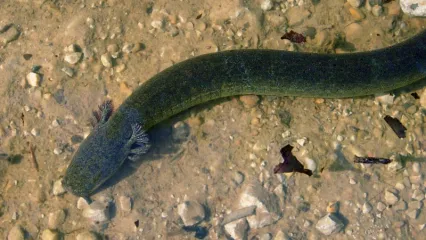
Description
Barred tiger salamanders are large, stout salamanders with broad heads and small eyes. Their name is derived from their color pattern, which is black with yellow bars. They have laterally compressed tails.
Size
Barred tiger salamanders are one of the largest salamanders in the United States. Individuals can reach up to 11.5 inches in total length.
Habitat
Barred tiger salamanders occur throughout much of south central Canada into the Rocky Mountains in the United States and into Arizona; east to Kansas and Oklahoma; and south as far as Sonora and Chihuahua, Mexico. In Oklahoma, these salamanders are mostly limited to the western half of the state. There, they can be found in ponds, near streams, and even in caves.
Life Cycle
Adults migrate to temporary and permanent ponds, small lakes, and other bodies of water to breed. Migrations are typically in the spring after rainfall. Eggs are deposited singly or in small clusters attached to twigs or other vegetation in the water. Transformed adults typically deposit fewer than 7,000 eggs. Larvae feed on a variety of aquatic invertebrates.
How To Observe
Barred tiger salamanders are difficult to observe because they frequently remain underground. They can be observed when they come above ground after heavy rains and move to breeding ponds. In the western part of the range, dry conditions may force salamanders to remain in ponds, where they retain the bushy gills of the larval form even though they become reproductive adults. Dipnetting small ponds in pastures or grasslands can reveal tiger salamanders.
(This profile was created by Dr. Laurie Vitt as part of a partnership between the Wildlife Department and the Sam Noble Oklahoma Museum of Natural History. It was funded as part of a larger State Wildlife Grant to survey and inventory amphibians and reptiles of the Wildlife Management Areas of Oklahoma: T-35-P-1.)


